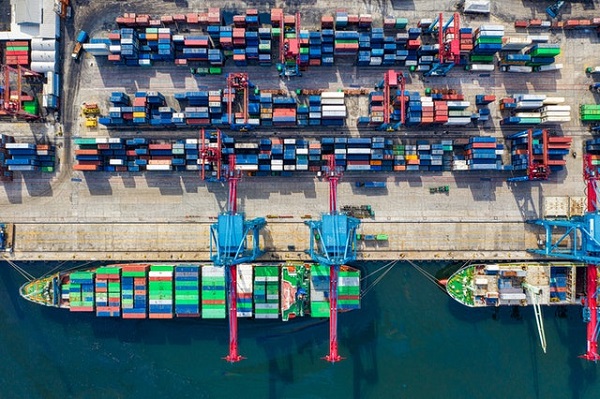Despite reserving significant capacity in the daily tasks of numerous organizations, logistics management is still observably lagging when it comes to change.
While retail and e-commerce face many interruptions and continue to persevere, 50 percent of trucks travel empty on their return trip, and stockrooms are either stuffed or standing idle.
Digitalization will enable warehousing and transportation tasks to improve client experience significantly, convey more incentive to stakeholders, and thus – make a thriving environment of the supply chain: manufacturers, carriers, cargo forwarders, and that’s only the tip of the iceberg.
Digitalization frequently comes down to two methodologies: automation and data utilization. This article depicts how Logistics Management Systems (or LMSs) can bring more value via automation procedures and utilizing information to settle on educated choices. Moreover, you’ll discover how to incorporate with 3PL organizations in case you pass on logistics responsibilities to a third party.

What Is a Logistics Management System?
Logistics typically works in both forward and reverse directions. Usually, when we are talking about activities such as receiving and processing an order, checking and prepping inventory, packaging the item, dispatching it, and selecting an optimal transport route that will get the product to the customer quickly and efficiently, we mean forward direction. On the other hand, activities such as handling damaged or mistaken shipments, item repairs, the reusing and recycling of items are the reverse directions.
Today the world is moving toward a digital revolution. There’s an app for everything. For managing both forward and reverse logistics, businesses utilize logistics management systems- containing a wealth of features and tools which optimize all the processes between receiving an order and delivering it.
Main modules of a Logistics Management System
Order management
Getting and preparing a request online ordinarily incorporates the tasks of making and altering inventory, overseeing customer care, receiving payments, checking for errors, and dealing with the paperwork between manufacturers, suppliers, warehousing, and transportation organizations.
To oversee orders properly and avoid double handling errors, orders, stock, supplier, and client information has to be synched under one system. An Order Management System (OMS) gets orders from every one of your business channels and monitors them from the minute they’re set until the client confirms delivery. This is your fundamental network center where all data about orders are shown: transport routes, location, stock, warehouse availability, and integrated with bookkeeping to make invoices and accept payments, and so on.
An OMS that is integrated with your system is connected to your CRM and stock database to supplement the business pipeline and provide information to the bookkeeping and marketing departments. Some additional highlights incorporate connectivity to well-known marketplaces, vendors’ inventories, and multi-currency alternatives.
Inventory management
Inventory management is an indispensable piece of the supply chain answerable for controlling and reporting the measure of items that are available to be purchased. Acquiring, storing, and tracking inventory, while managing its quick and constant changes, requires profoundly accurate product data management. Thus, going from spreadsheets to Inventory management systems (IMS) brings the required clarity focusing all the information in a single location through an inventory management system.
IMS tracks and reports any stock changes. It keeps up the balance in renewal, maintaining a strategic distance from stock-outs and overabundance of stock. The framework tracks low stock levels and sets programmed re-requesting for every item. In the meantime, it lessens the danger of requesting overabundance by analyzing item demand.
Warehouse management
Warehouse management involves a set of procedures keeping up, controlling, and computerizing stockroom activities. This incorporates receiving items, transporting them, overseeing distribution center staff utilizing KPIs, keeping up safe work conditions, and making use of software and tools to help find and track things.
A warehouse management system comprises of tools that streamline the work process of overseeing products from when they arrive in the stockroom through storage and tracking inside the area to order management and dispatching.
Typically, WMS is responsible for the following operations.
- Warehouse design.
- Picking.
- Packing.
- Labor management.
Strategic transport planning
After the order is assembled and wrapped, the last thing left before it leaves the warehouse is optimizing its shipment, namely:
- Choosing a shipping method.
- It is connecting to the carrier network.
- We are defining customs fees and documentation for global fulfillment.

Transport management
Transportation management software (TMS) is the main software tool used for all freight transportation needs. When looking to implement a TMS, organizations look for the following functionalities:
- Delivery management and scheduling.
- Cross-docking.
- Order tracking.
- Transportation accounting.
Reverse logistics
It is difficult to manage and make use of returns from the customer back to the producer. To keep the processes of repairing, returning, and product reallocation streamlined, companies often turn to reverse logistics systems (RLS).
Returns logistics services include:
- Information tracking.
- Returns status.
- Quality assurance tracking.
Logistics analytics
Through the use of big data, the software can examine the transportation history of a product and improve customers’ activities that will limit strategic expenses and lessen shipment conveyance times. Applying Business Intelligence, the product can create execution measurements and KPIs, and design models to foresee issues in the supply chain.
As LMS requires a tremendous amount of data, it ought to be effectively utilized. Reporting abilities of a Logistics analytics software (LAS) leads to better permeability and command over future logistics results.
Among the important reports, LAS functionalities are:
- Freight accruals
- Carrier reports
- KPI reports
At Syncoria we have the experience of working with both startups and established industry giants.
Our custom-designed solutions are made for your own unique needs and are guaranteed to help you achieve your business goals.
Through the utilization of Odoo’s many intuitive modules, we offer customized solutions that will transform and optimize your business and the various processes of each department.
Our local team consists of business analysts, solution architects, project managers, delivery managers, and quality assurance engineers, all of whom are trained experts in Odoo.
We ensure we reach successful implementation every time through an iterative and transparent process. For a free assessment, call us at +1 (416) 628-5522, or email us at odoo@syncoria.com.